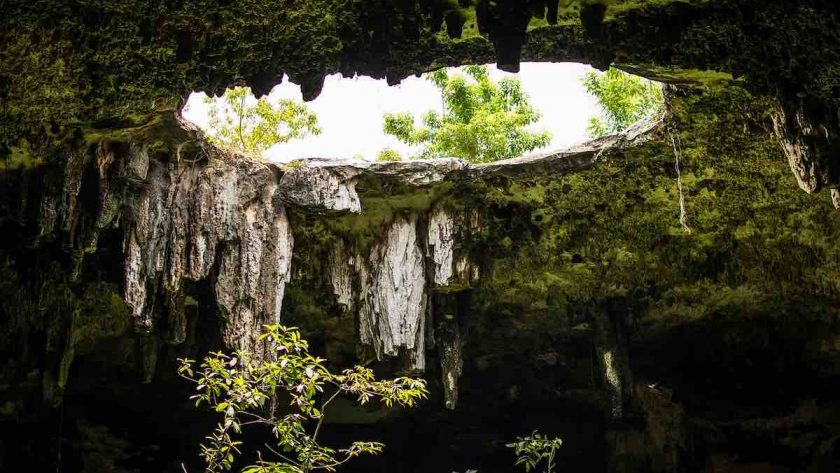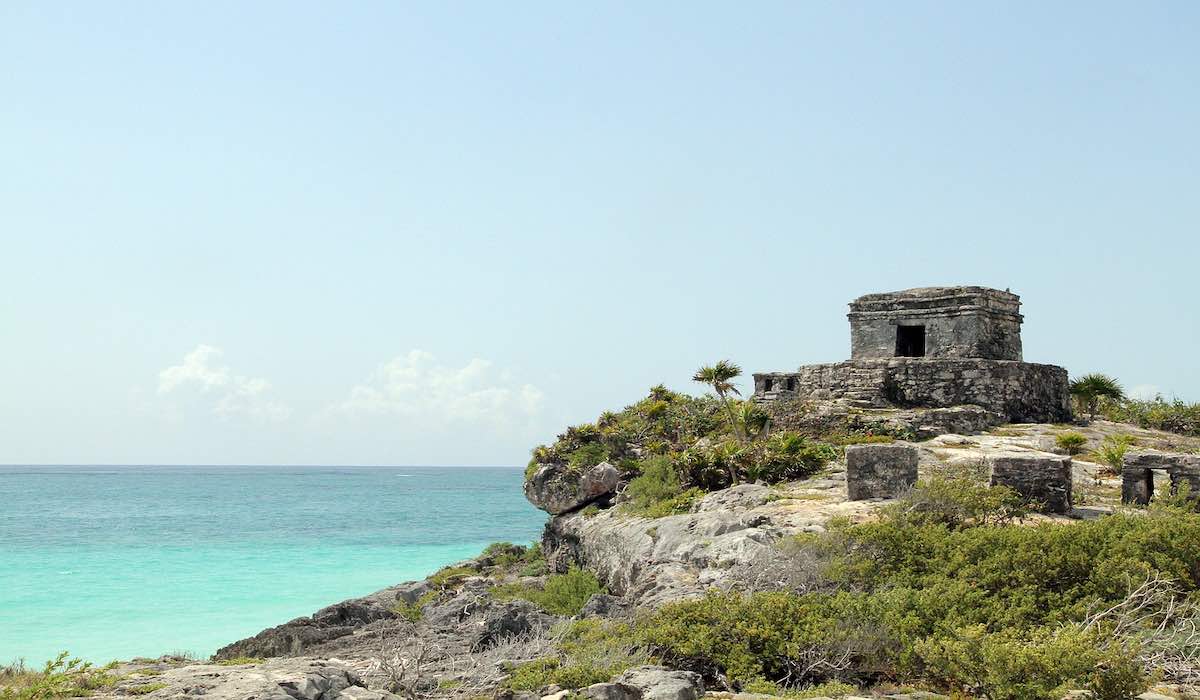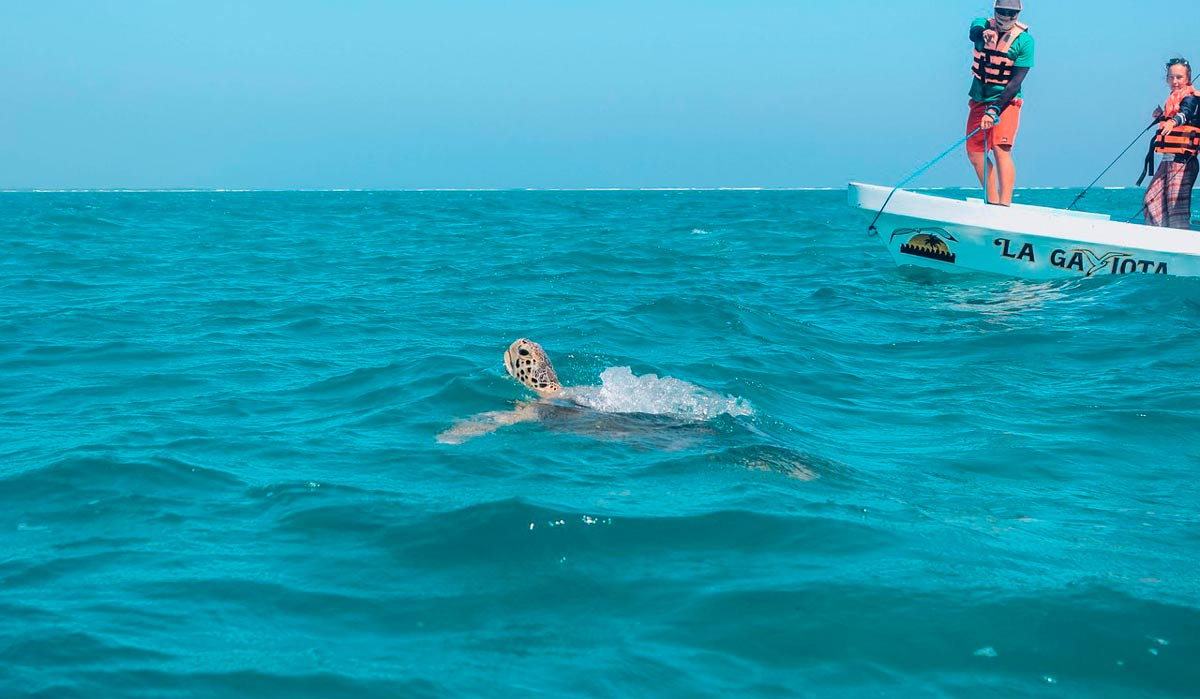This post is also available in:
 Español
Español
Surely a visit to Chichen Itza is a must on your trip to Mexico, are we wrong? Well, today we are here to reveal some natural formations where you can enjoy a few days of peace in the middle of nature, right in the middle! We’ll tell you what the cenotes of Yucatan are so you don’t miss them, otherwise you’ll regret it. Let’s get to it!
What is a cenote
In ancient Maya culture the words dzonot or ts’onot existed to define concepts such as ‘sacred well’ and ‘abyss’. It is from these two terms of the Yucatec Mayan language that the word cenote comes from. But what is a cenote? The cenotes are natural lagoons formed by the wear of the limestone during millions of years and that has ended up forming underground caves and caverns that have been filled with water by the filtration of the precipitations.

Although cenotes exist in other corners of the world, most of them are concentrated in the touristic Yucatan Peninsula (Mexico) where they are calculated more 7.000 cenotes. There is much more than visiting Riviera Maya.
How cenotes in Yucatan were formed
The impact of the meteorite that extinguished the dinosaurs is the origin of the more than 7.000 cenotes in Yucatan. Venerated by the Mayans under the term of dzonot – sacred pool -, the cenotes have their epicenter in the crater where the meteorite hit: Chicxulub or Pozo del Diablo.
This concentration of the cenotes in northern Mexico is explained by a key milestone in the history of the world as we know it today. 65 million years ago, a meteorite 10 kilometers in diameter, almost the size of Mount Everest, hit the north of the current Yucatan Peninsula. Its fall caused the well-known extinction of the dinosaurs and the end of the Cretaceous era.
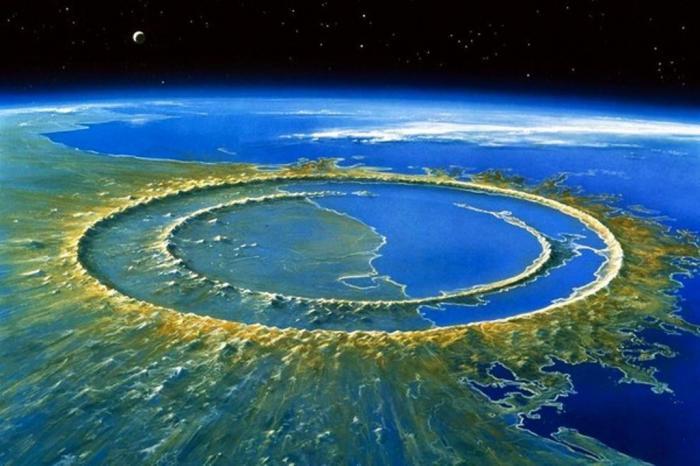
Now you may be thinking, if the meteorite that generated the cenotes in Yucatan had never existed, a trip to Sian Ka’an would have meant a trip among dinosaurs. Well, maybe, but forget about meeting a diplodocus and focus on meeting the animals of Sian Ka’an and enjoying the cenotes on your visit to Tulum, for example.
Crater ‘Chicxulub’ or Pozo del Diablo
The first reference that there was of this catastrophic event was discovered in the middle of the last century, within the exploratory works of the Mexican Oil Company in Yucatán. It was then when it was detected that under the sea there was a geophysical anomaly: a semicircular structure of about 200 kilometers in diameter.
As a result of the impact, a network of sinks was formed that were the prelude to the current cenotes in Yucatan. The crater that was formed with the impact is called Chicxulub, like the Yucatecan population where it is located -the Mayan Chac-xulub-chen-, and whose meaning would come to endorse its malignant origin: Pozo del Diablo.
From diabolical wells to sacred cenotes
Prior to the discovery of the crater and being called Pozo del Diablo, the cenotes in Yucatan were revered by the Mayan people. As we mentioned at the beginning, the word cenote comes from the Mayan word dzonot which means ‘sacred well’.
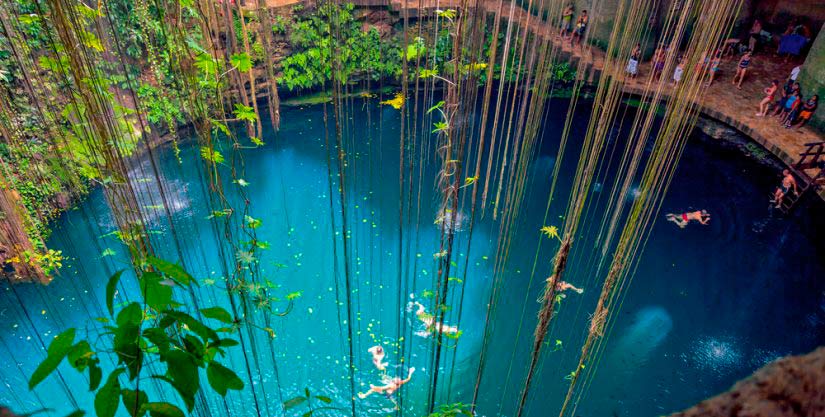
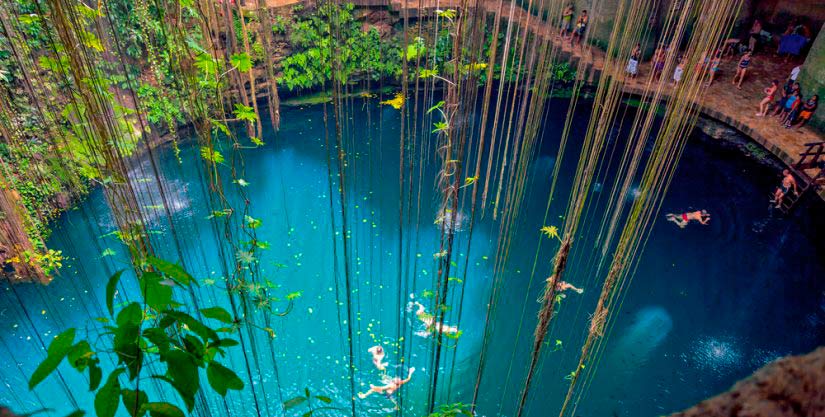
A meaning that has its explanation is that for this culture the cenotes represented the main source of fresh water in a region that does not have lakes and suffers long periods of drought. Thus, by way of survival, almost all the Mayan villages settled near a cenote, so they had assured the supply of drinking water.
The cenotes were places venerated by the Mayans and in which religious ceremonies were celebrated that included human sacrifices
Also, the cenotes were important for mystical and religious reasons. The Mayans believed that the cenotes could be portals to the underworld and, therefore, a way to communicate with the gods. Archaeologists have found remains of religious ceremonies that took place in or around the cenotes, including human sacrifices.
Now they are tourist destinations where travelers enjoy a swim in its crystal clear waters. The most famous are like large open-water swimming pools that measure tens of meters in diameter, as Ik Kil cenote. Watching the sunrise at Chichen Itza is not the only thing that will surprise you! When can you check it out?

